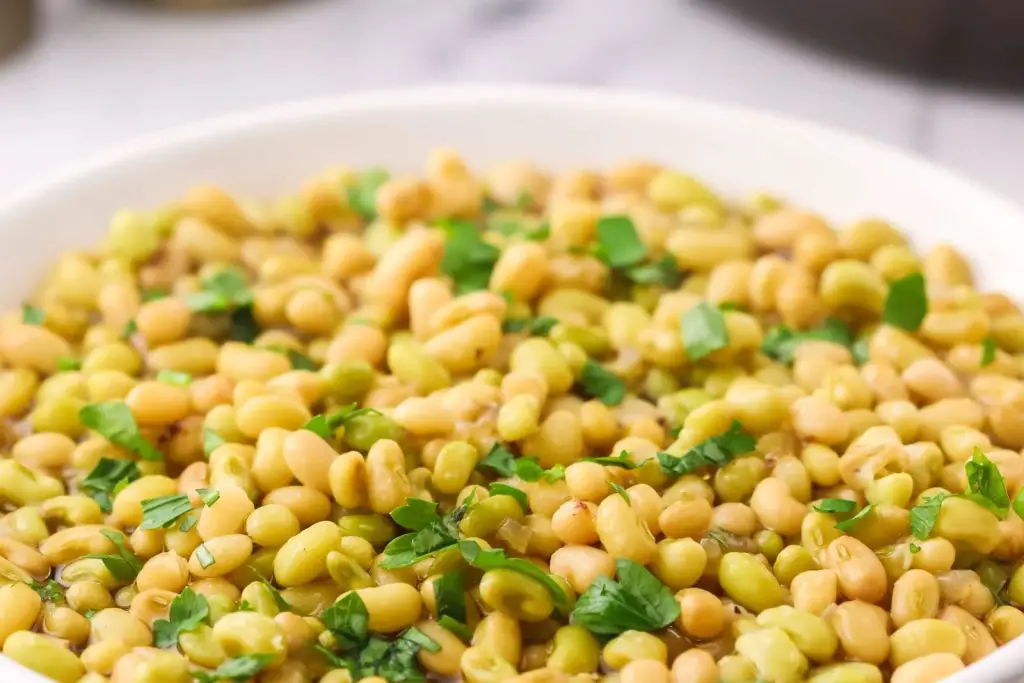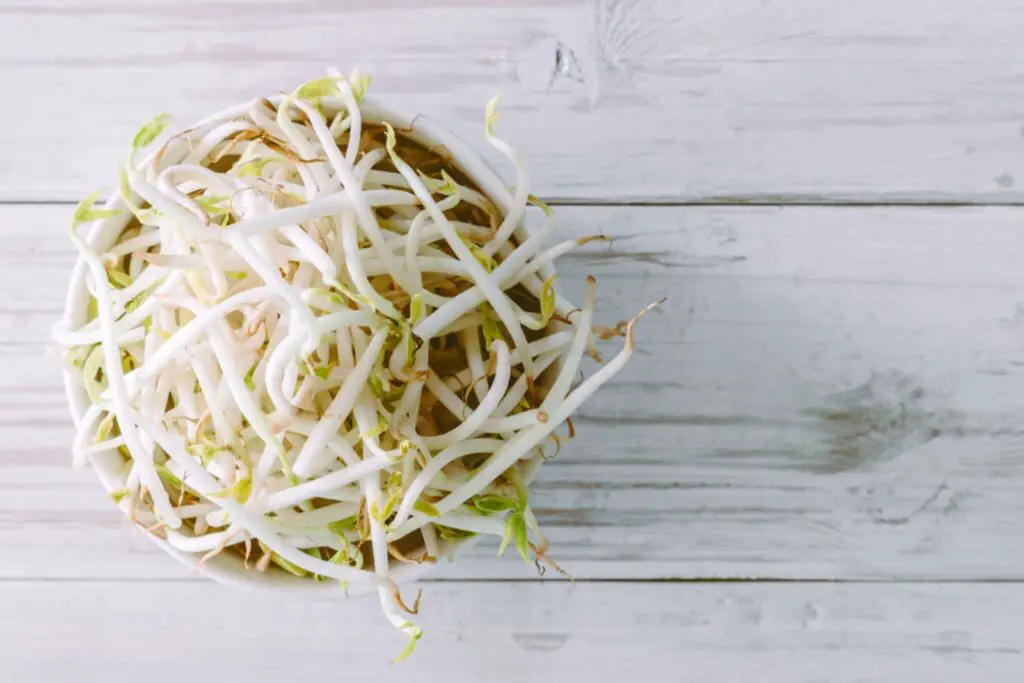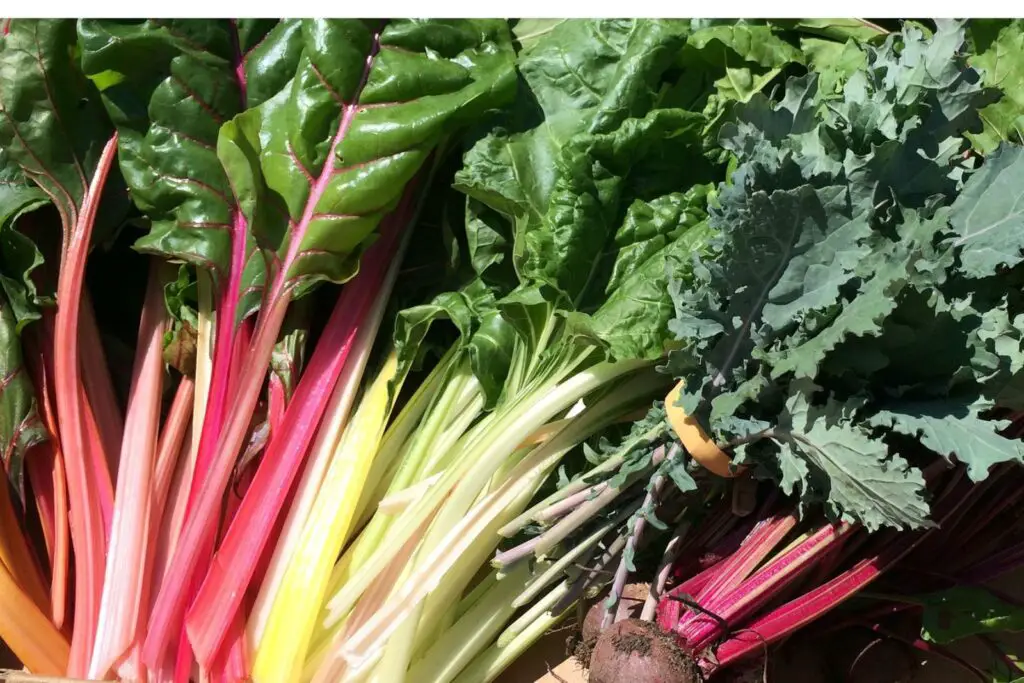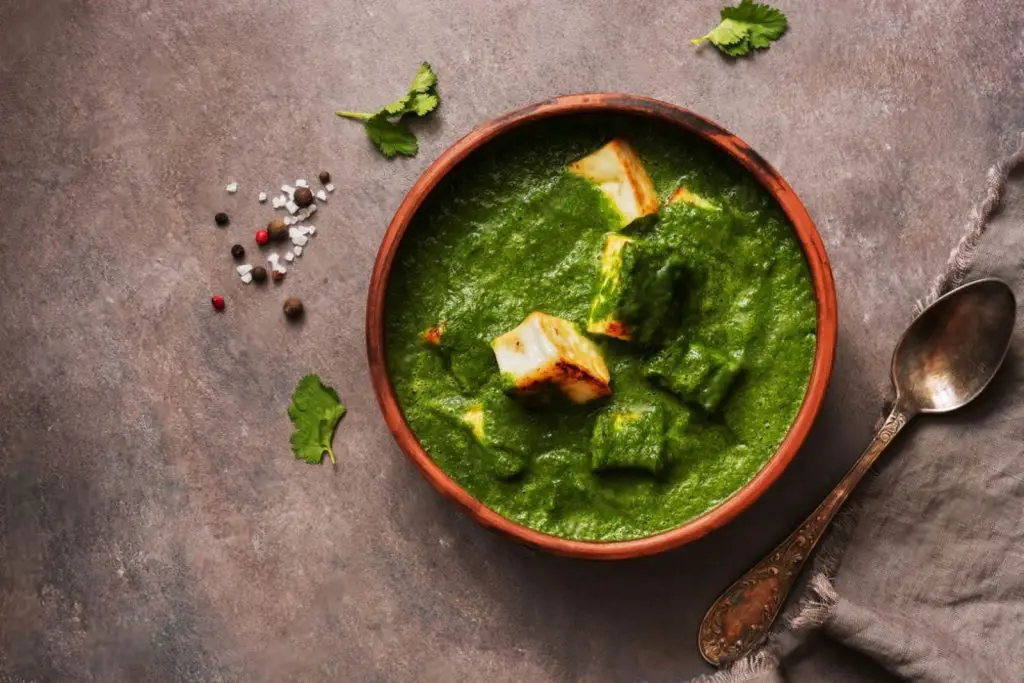
Carrots are root vegetables known for their vibrant orange color and sweet, earthy flavor. They are rich in nutrients, including beta-carotene, which the body converts to vitamin A for vision and immune health. Carrots also contain antioxidants, vitamins C and K, potassium, and folate. Freezing carrots is a wonderful way to preserve their freshness and nutritional value for future use. Whether you have a surplus of carrots from your garden or want to take advantage of a great deal at the grocery store, freezing them properly will ensure that you can enjoy their crispness and flavor even months later. By following these steps, you can have frozen carrots on hand for various recipes or as a convenient side dish.
Here are the simple steps to freeze carrots:
Step 1: Start with fresh carrots
When freezing carrots, it’s important to begin with fresh carrots to ensure the best quality and taste in the final frozen product. Freshness is crucial because it directly affects the texture, flavor, and overall quality of the carrots once they are thawed and cooked.
Fresh carrots are typically young, firm, and free from any blemishes or signs of decay. These carrots have a crisp texture and a sweet, vibrant flavor. On the other hand, wilted, soft, or decaying carrots may not freeze well and can result in a mushy texture and a loss of flavor.
By choosing fresh carrots, you are setting the foundation for a successful freezing process. Fresh carrots have a higher water content and are less likely to become dry or rubbery after freezing. They also retain their nutritional value better compared to older or damaged carrots.
When selecting fresh carrots, look for those that are brightly colored, with smooth and unblemished skin. Avoid carrots with soft spots, cracks, or signs of mold. These visual cues indicate that the carrots may be past their prime and are more likely to deteriorate during the freezing process.
Step 2: Wash and peel the carrots
To prepare the carrots for freezing, it’s important to wash them thoroughly to remove any dirt, debris, or potential contaminants. This step ensures that your frozen carrots will be clean and safe to consume.
Start by placing the carrots under cool running water. Gently rub the surface of each carrot with your hands or a soft vegetable brush to remove any visible dirt or residue. Pay special attention to the ends and crevices where dirt may be trapped.
Washing the carrots helps remove any impurities that might affect the taste and quality of the frozen carrots. Additionally, it removes any potential bacteria or pesticide residues that may be present on the carrot’s surface.
After washing, you have the option to peel the carrots. Peeling can help remove any remaining dirt and also eliminate the outer layer, which might contain a slightly bitter taste. A vegetable peeler is a handy tool for this task. Simply hold the carrot firmly and glide the peeler along its length, removing the outer skin.
However, if you have organic carrots with thin and tender skin, peeling may not be necessary. The skin of organic carrots is often free from harmful chemicals, and leaving it intact can provide additional nutrients and fiber. In this case, a thorough wash is sufficient to clean the carrots before freezing.
Ultimately, whether you choose to peel the carrots or not depends on personal preference, the condition of the carrots, and whether they are conventionally or organically grown. Both peeled and unpeeled carrots can be successfully frozen and used in various recipes.
Can I freeze carrots with the greens still attached?
Yes, you can freeze carrots with the greens still attached, but it’s recommended to remove the greens before freezing. The carrot greens have a higher water content and tend to wilt and deteriorate faster in the freezer. However, if you prefer to keep the greens, you can blanch and freeze them separately for later use in stocks, soups, or pesto.
Step 3: Cut the carrots
When freezing carrots, it’s important to cut them into the desired shape and size before proceeding with the freezing process. By doing so, you can customize the carrots to fit your future culinary needs and make the cooking process more convenient.
First, consider the desired shape for your frozen carrots. Carrots can be cut into rounds, sticks, or cubes, depending on your preference and the specific recipes you plan to use them in. Round slices are versatile and work well in soups, stews, and stir-fries. Stick-shaped carrots are commonly used as a snack or in recipes like roasted vegetables. Cubes are ideal for adding to casseroles or as a side dish.
When cutting the carrots, it’s important to keep in mind that larger pieces may take longer to cook when you use them later. This is especially true if you plan to use the frozen carrots in recipes that require shorter cooking times or in dishes where you want the carrots to be tender yet retain some texture. Smaller or more finely diced carrots will cook more quickly and evenly.
Consider the cooking methods and recipes you have in mind for your frozen carrots. If you plan to use them in dishes that require longer cooking times, such as stews or slow-cooker recipes, you can opt for larger pieces. However, if you intend to use the frozen carrots in quick stir-fries or as a side dish, smaller and thinner cuts will ensure they cook through more rapidly.
Remember to use a sharp knife when cutting the carrots to ensure clean and precise cuts. Take care to keep your fingers away from the blade and maintain a stable cutting surface for safety.
Step 4: Blanch the carrots
Blanching is a crucial step in the process of freezing carrots as it helps to preserve their color, texture, and nutritional value. By briefly cooking the carrots in boiling water, blanching helps to deactivate enzymes that can cause deterioration and loss of quality during freezing.
To blanch the carrots, start by bringing a pot of water to a rolling boil. The pot should be large enough to comfortably accommodate the carrots without overcrowding. It’s important to use a sufficient amount of water to ensure even heat distribution and efficient blanching.
Carefully add the prepared carrots to the boiling water. The blanching time will vary depending on the size of the carrot pieces. Generally, smaller cuts such as rounds or diced carrots will require a slightly shorter blanching time, while larger cuts like sticks or cubes may need a bit longer.
Typically, blanching carrots for about 2 to 3 minutes is sufficient. However, it’s important to monitor the carrots closely and adjust the blanching time accordingly. The goal is to blanch the carrots just enough to deactivate the enzymes but avoid overcooking them, as this can result in a loss of flavor, texture, and nutrients.
The blanching process helps to maintain the vibrant color of the carrots by halting the enzyme activity that can lead to discoloration. It also helps to partially cook the carrots, which can make them easier to handle and prepare in recipes after freezing.
Can I freeze carrots without blanching them?
Blanching is recommended to maintain the color, texture, and nutrient quality of carrots during freezing. It helps to deactivate enzymes that can cause deterioration. While it’s possible to freeze carrots without blanching, the quality may be compromised, and the carrots may have a shorter freezer life.
Step 5: Cool the carrots quickly
After blanching the carrots, it’s crucial to cool them down quickly to halt the cooking process and preserve their texture and nutritional value. This is achieved by transferring the blanched carrots to an ice bath, which consists of a bowl or basin filled with ice water.
Promptly remove the blanched carrots from the boiling water using a slotted spoon or tongs. The ice bath should be prepared in advance to ensure that it is ready for immediate use. Gently place the hot carrots into the ice bath, submerging them completely.
The purpose of the ice bath is twofold. Firstly, it rapidly lowers the temperature of the carrots, stopping the cooking process. This is important because overcooking the carrots during blanching can lead to loss of texture and flavor. Cooling them quickly helps to preserve their crispness and ensure they retain their desirable texture after freezing.
Secondly, the ice bath helps to preserve the color of the carrots. By cooling them rapidly, the ice bath helps to set the vibrant color achieved through blanching and prevents further enzymatic activity that could lead to discoloration.
Leave the carrots in the ice bath for the same amount of time they were blanched. This ensures that the carrots cool down evenly and thoroughly. For example, if the carrots were blanched for 2 to 3 minutes, keep them in the ice bath for a similar duration.
Step 6: Drain and dry the carrots
Once the carrots have been cooled in the ice bath, it is important to drain them thoroughly and remove any excess water. This step helps to prevent the formation of ice crystals during the freezing process, which can negatively impact the texture and quality of the frozen carrots.
To drain the carrots, lift them out of the ice bath using a slotted spoon or drain them in a colander. Allow the water to drain off completely. It’s important to ensure that the carrots are not excessively wet, as the presence of excess moisture can lead to the formation of ice crystals, which can cause freezer burn and affect the taste and texture of the frozen carrots.
After draining, it is recommended to pat the carrots dry with a clean kitchen towel or paper towels. Gently press the towel against the carrots to absorb any remaining moisture. Drying the carrots helps to remove any residual water and further minimize the risk of ice crystal formation during freezing.
Preventing the formation of ice crystals is essential in maintaining the quality of the frozen carrots. Ice crystals can cause cellular damage to the carrots and result in a loss of texture, flavor, and nutritional value. By draining and drying the carrots properly, you minimize the chance of these undesirable ice crystals forming and ensure that your frozen carrots remain as close to their fresh state as possible.
Step 7: Package the carrots
After draining and drying the carrots, the next step is to package them properly for freezing. This ensures that the carrots are protected from freezer burn, maintain their quality, and are easy to use in the future.
First, divide the blanched and dried carrots into portion sizes that suit your needs. Consider how you plan to use the carrots in recipes or meals. Dividing them into smaller portions allows for more flexibility when it comes to using the frozen carrots later on.
Once portioned, you have a few options for packaging the carrots. Freezer-safe bags and airtight containers are commonly used for freezing vegetables. These containers help to protect the carrots from moisture loss and freezer burn, which can negatively affect their texture and taste over time.
If using freezer bags, choose high-quality, thick bags specifically designed for freezing. Place the portioned carrots into the bags, removing as much air as possible before sealing them. This can be done by gently squeezing out excess air from the bag as you seal it.
If using airtight containers, ensure that they are suitable for freezing and have a tight-fitting lid. Place the portioned carrots into the containers, leaving a small headspace to allow for expansion during freezing. Seal the containers tightly to prevent air exposure.
Alternatively, a vacuum sealer can be used for even better results. Vacuum sealing removes the air from the packaging, minimizing the risk of freezer burn and preserving the quality of the carrots for a longer period. Follow the manufacturer’s instructions for vacuum sealing vegetables to ensure optimal results.
Step 8: Label and date the package
Once you have packaged the carrots for freezing, it’s important to label each package with relevant information, including the contents and the date of freezing. Proper labeling ensures that you can keep track of the storage time and use the oldest carrots first, maintaining their quality and freshness.
Labeling the packages allows you to easily identify the contents without having to open them. This is especially useful when you have multiple packages of frozen carrots or when storing them alongside other frozen foods. By clearly indicating that the package contains carrots, you can quickly locate them when needed.
In addition to labeling the contents, it’s crucial to include the date of freezing on each package. This information serves as a reference point to determine the storage duration of the frozen carrots. It allows you to keep track of how long the carrots have been in the freezer, ensuring that you use the oldest ones first.
By following the “first in, first out” principle, you can maintain the quality of your frozen carrots. Using the oldest carrots first ensures that they are consumed within the recommended storage time frame and minimizes the risk of freezer burn or loss of flavor and texture due to extended freezing.
Proper labeling also helps to avoid confusion and prevents wastage. By knowing the date of freezing, you can assess the quality of the frozen carrots based on the recommended storage duration. If the carrots have been stored for an extended period, it may be time to use them or consider replacing them with freshly frozen carrots for optimal taste and texture.
Step 9: Store the carrots in the freezer
After properly packaging the carrots, the next step is to store them in the freezer. Proper storage ensures that the carrots remain frozen, maintain their quality, and are easily accessible when needed.
Start by arranging the sealed packages of carrots in a single layer in the freezer. Placing them in a single layer allows for faster and more even freezing. This ensures that the carrots freeze quickly, preserving their texture and nutritional content. It also helps to prevent the packages from sticking together, making it easier to retrieve individual portions when necessary.
Once the carrots are fully frozen, which typically takes several hours, you can stack the packages to save space in the freezer. Stacking the packages allows you to make efficient use of the available freezer space. However, ensure that the packages are securely sealed to prevent any air exposure or potential cross-contamination.
It’s important to store the carrots away from strong-smelling foods in the freezer. Carrots can absorb odors easily, which can affect their flavor and overall quality. To prevent cross-flavoring, store the packages of carrots away from strongly scented foods such as onions, garlic, or fish. You can use separate sections or shelves in the freezer to maintain separation between different food items.
Maintaining a consistent freezing temperature is vital for preserving the quality of the carrots. Set the freezer temperature to 0°F (-18°C) or below to ensure optimal freezing conditions. This low temperature helps to prevent the growth of bacteria, maintain the texture of the carrots, and extend their storage life.
Remember to periodically check the freezer for any signs of temperature fluctuations or freezer burn. If you notice any issues, adjust the temperature or consider using the carrots sooner rather than later to maintain their quality.
How long can carrots last in the freezer?
Carrots can last in the freezer for up to 12 to 18 months. Properly stored carrots, blanched and sealed in airtight containers or freezer bags, can maintain their quality for this extended period. However, for the best flavor and texture, it is recommended to use frozen carrots within 8 to 12 months.
Other related questions
How do I defrost carrots?
To defrost carrots, there are a few methods you can use. The easiest and safest way is to transfer the sealed package of frozen carrots to the refrigerator and allow them to thaw slowly overnight. Alternatively, you can place the sealed package in a bowl of cold water, changing the water every 30 minutes until the carrots are thawed. Avoid thawing carrots at room temperature to prevent bacterial growth.
Can I refreeze carrots?
It is generally safe to refreeze carrots, but the quality and texture may be compromised. Freezing and thawing carrots multiple times can lead to moisture loss, texture changes, and a decline in flavor. It is recommended to use thawed carrots within a few days and only refreeze them if they have been cooked or incorporated into a recipe to minimize the risk of bacterial growth.
How do I know if the carrots have gone bad after being frozen?
To determine if frozen carrots have gone bad, inspect their appearance, texture, and odor. If the carrots have developed an off-color, slimy texture, or a strong, unpleasant odor, it is likely that they have spoiled. Additionally, if there are any signs of mold or freezer burn, such as dry or discolored patches, it is best to discard the carrots to ensure food safety.
Can I freeze grated carrots?
Yes, grated carrots can be frozen. However, they may become softer in texture after thawing due to the release of moisture. It’s best to squeeze out any excess moisture before freezing, and they are ideal for use in cooked or baked dishes rather than for raw applications like salads.
Can I freeze baby carrots?
Yes, baby carrots can be frozen. Follow the same steps as freezing regular carrots, including washing, peeling (if desired), blanching, and packaging. Keep in mind that the freezing and thawing process may slightly affect the texture of baby carrots, but they can still be used in cooked dishes or recipes.
Can I freeze cooked carrots?
Yes, cooked carrots can be frozen. Allow them to cool completely before packaging and freezing. Cooked carrots may have a softer texture after thawing, but they are suitable for use in soups, stews, and other cooked dishes. Proper storage and labeling are essential to ensure food safety and proper usage.
Are there any specific varieties of carrots that freeze better than others?
When it comes to freezing carrots, some varieties tend to fare better than others. Generally, smaller varieties like baby carrots freeze well due to their size and tenderness. However, all carrot varieties can be frozen, but it’s important to blanch them properly and follow the correct freezing techniques to maintain their quality during storage.








